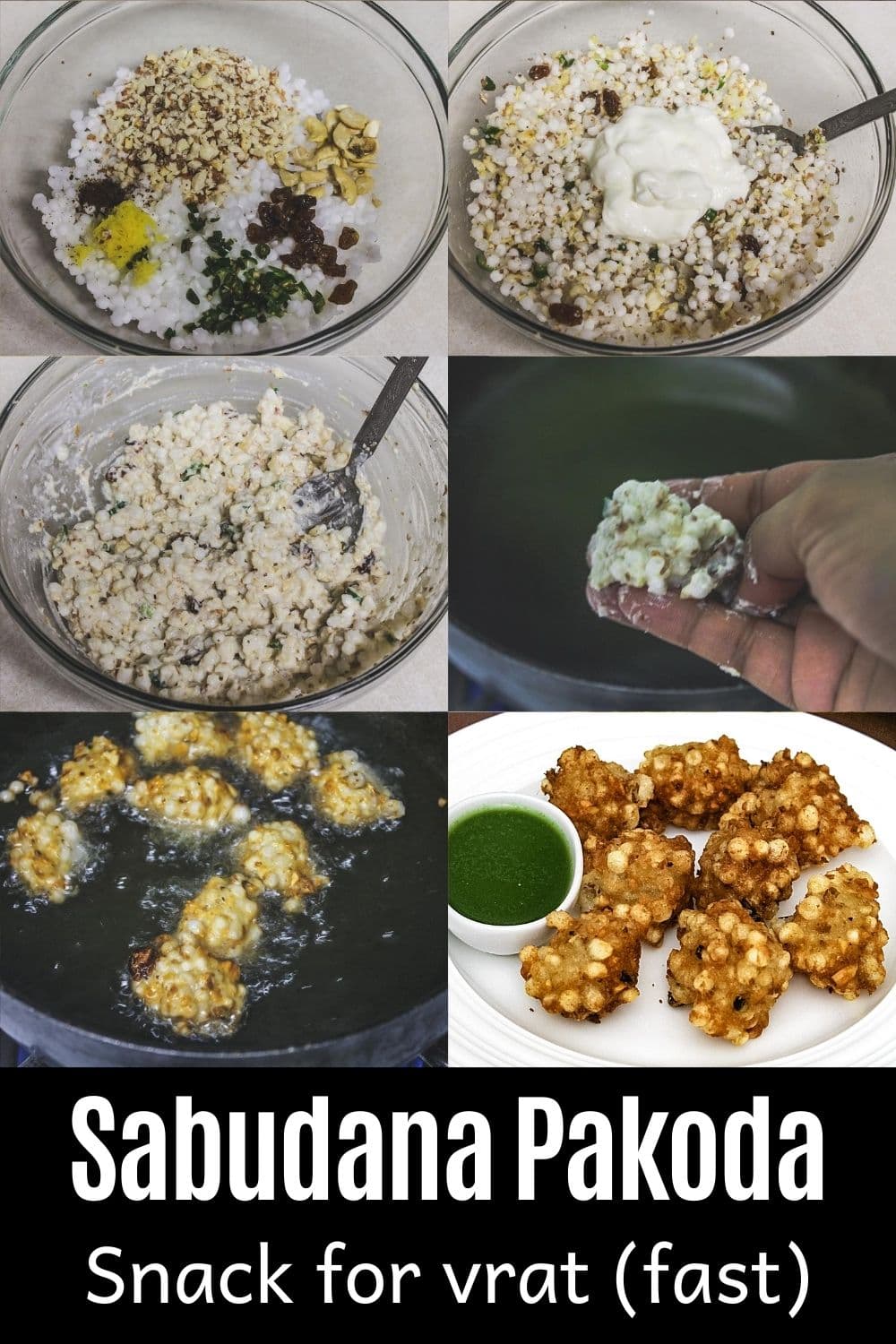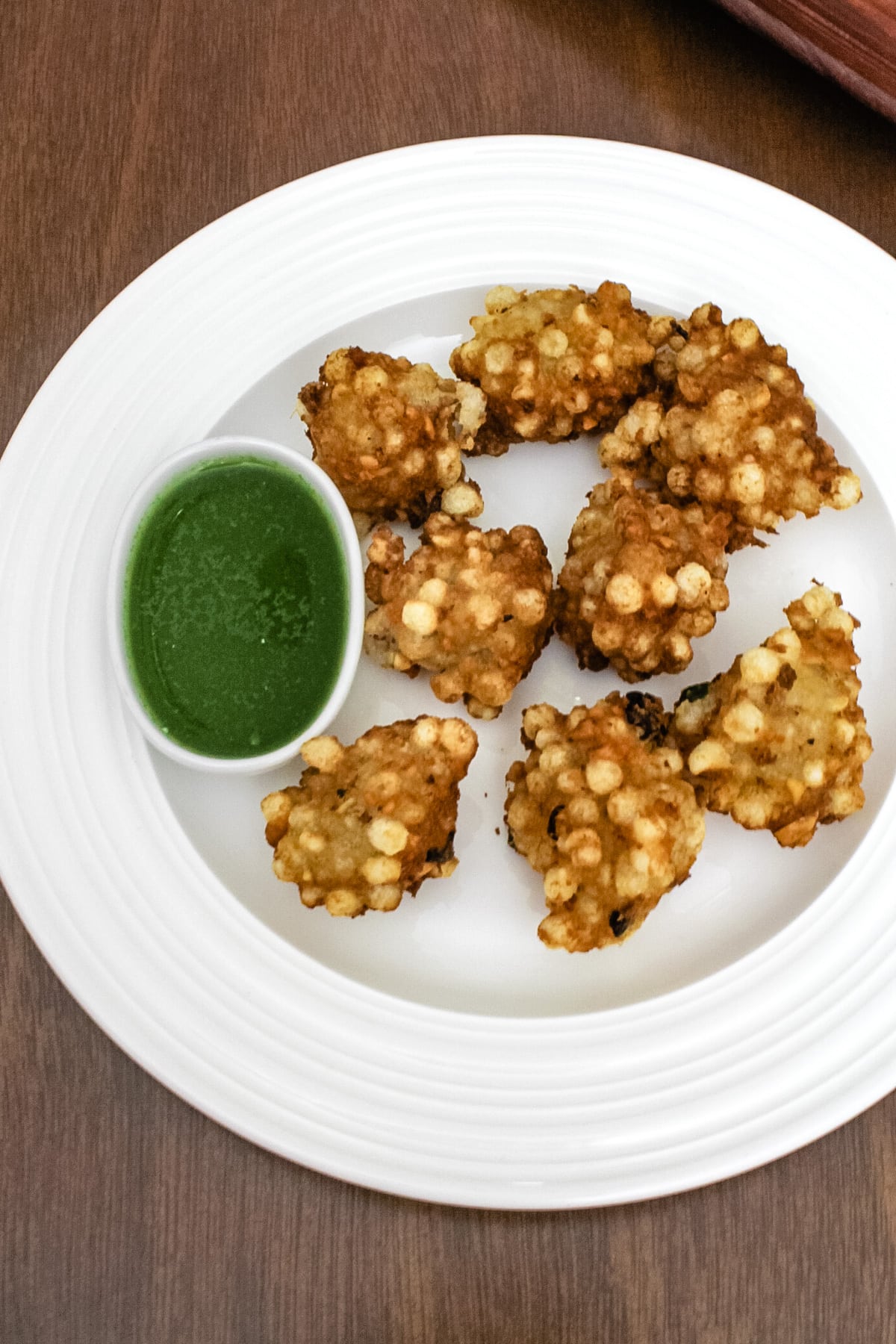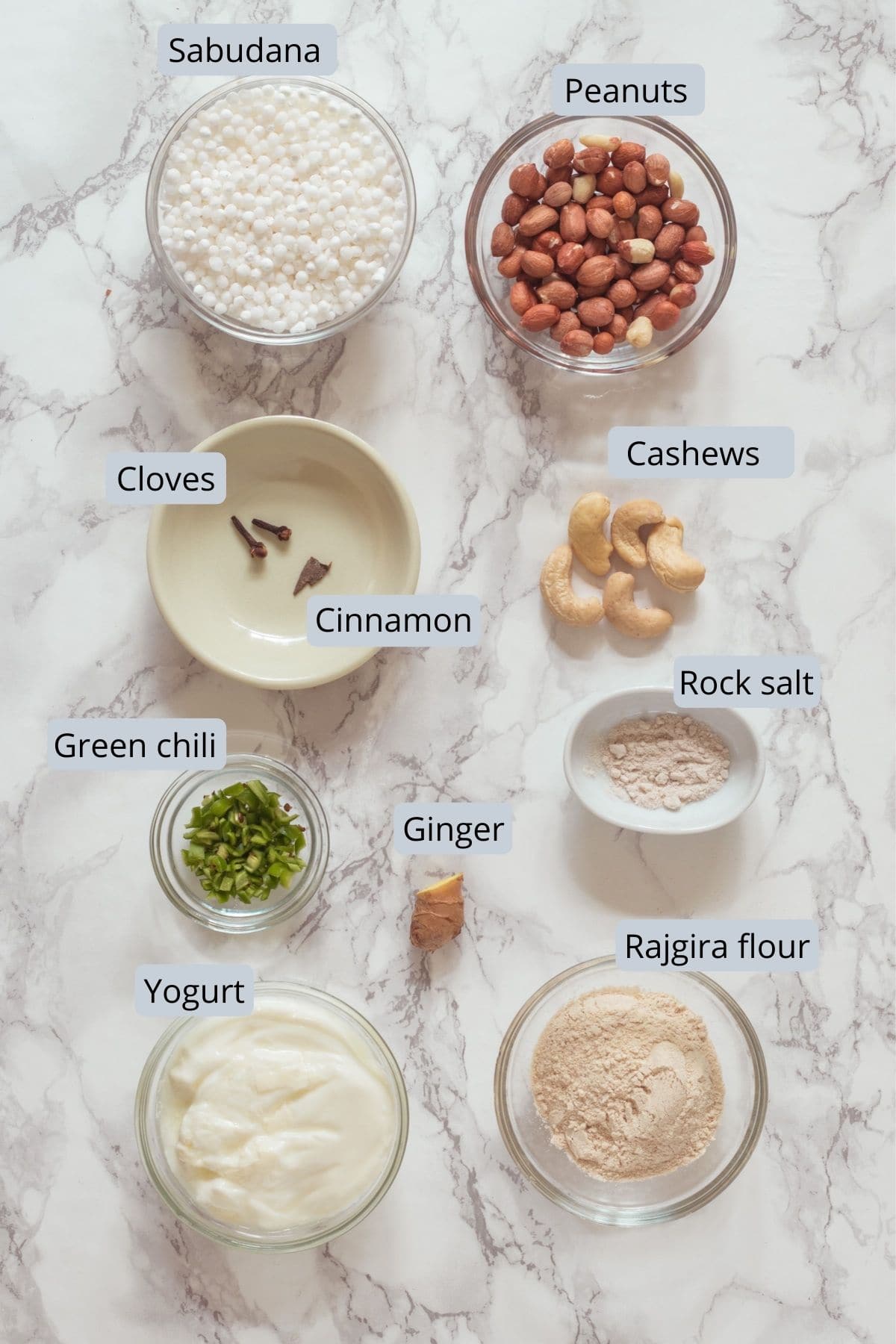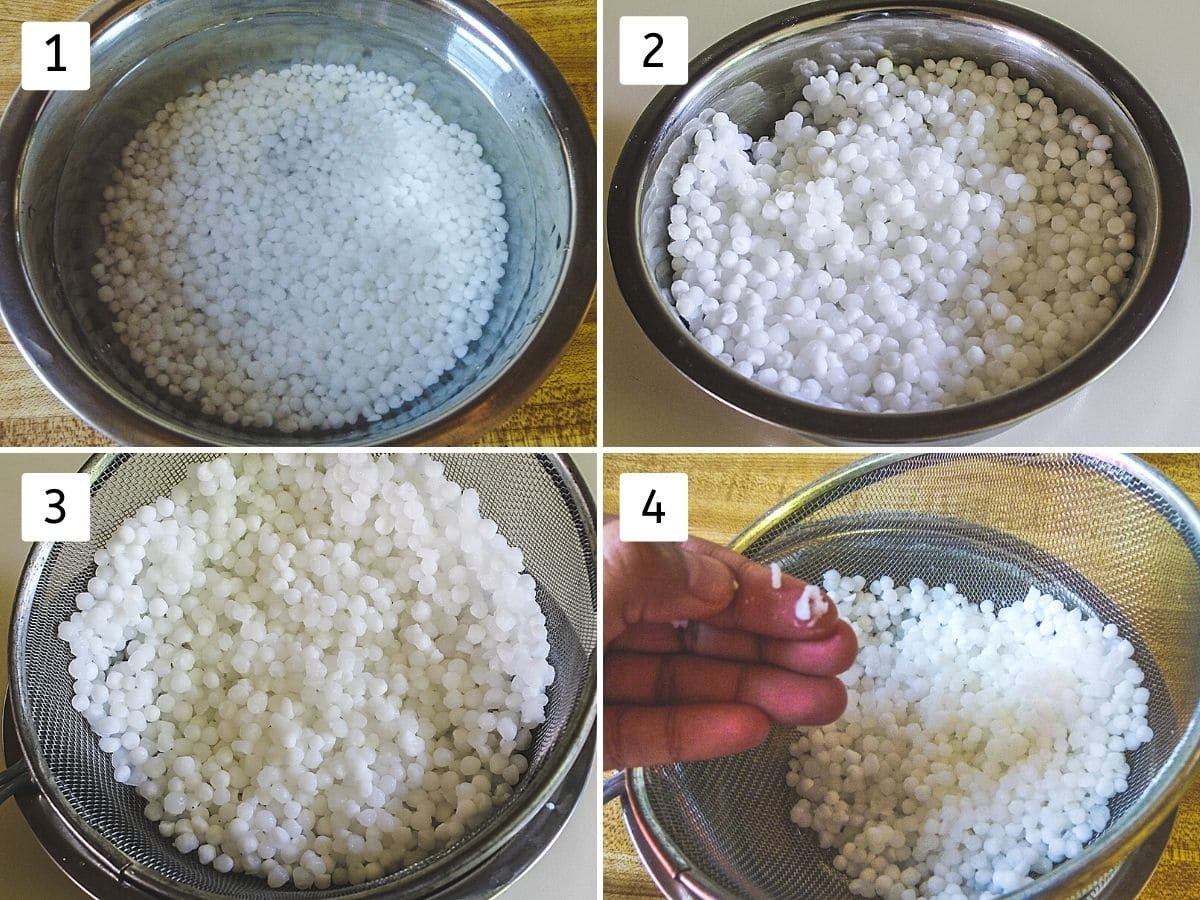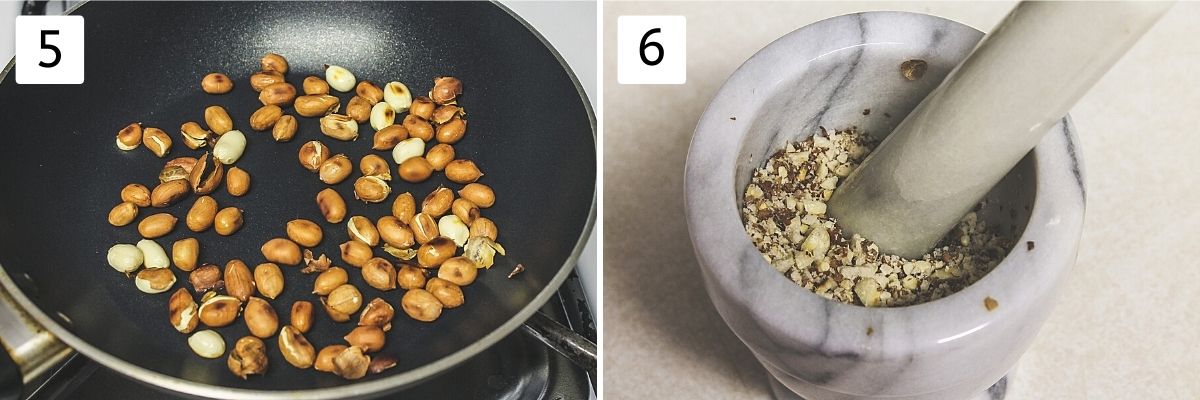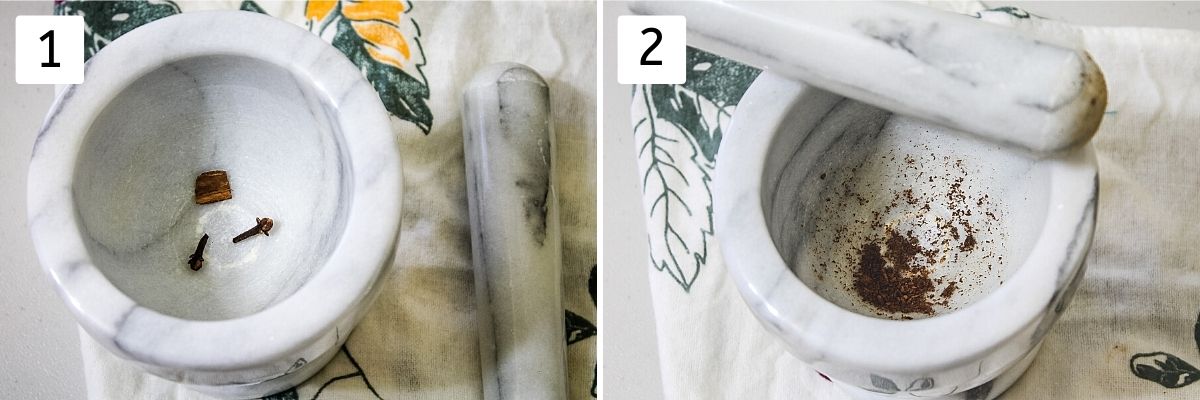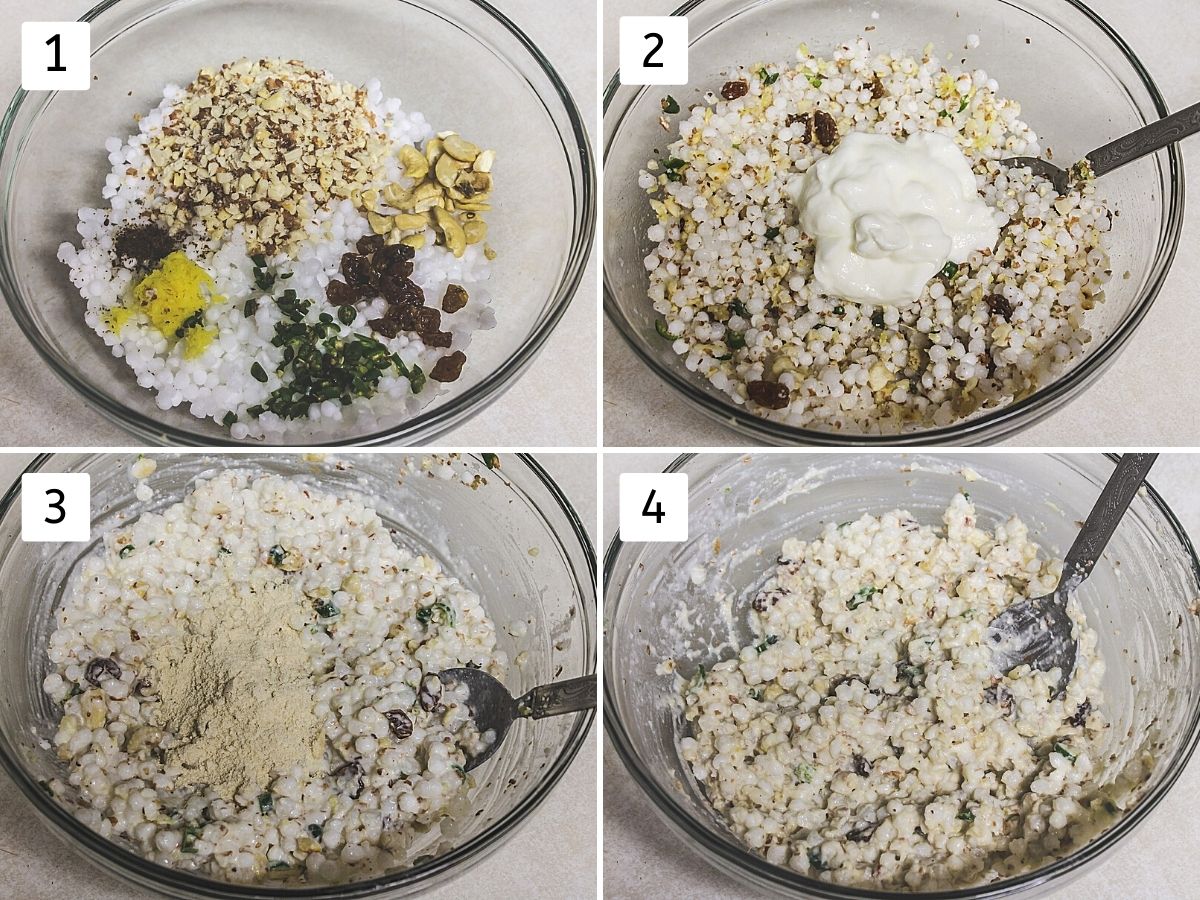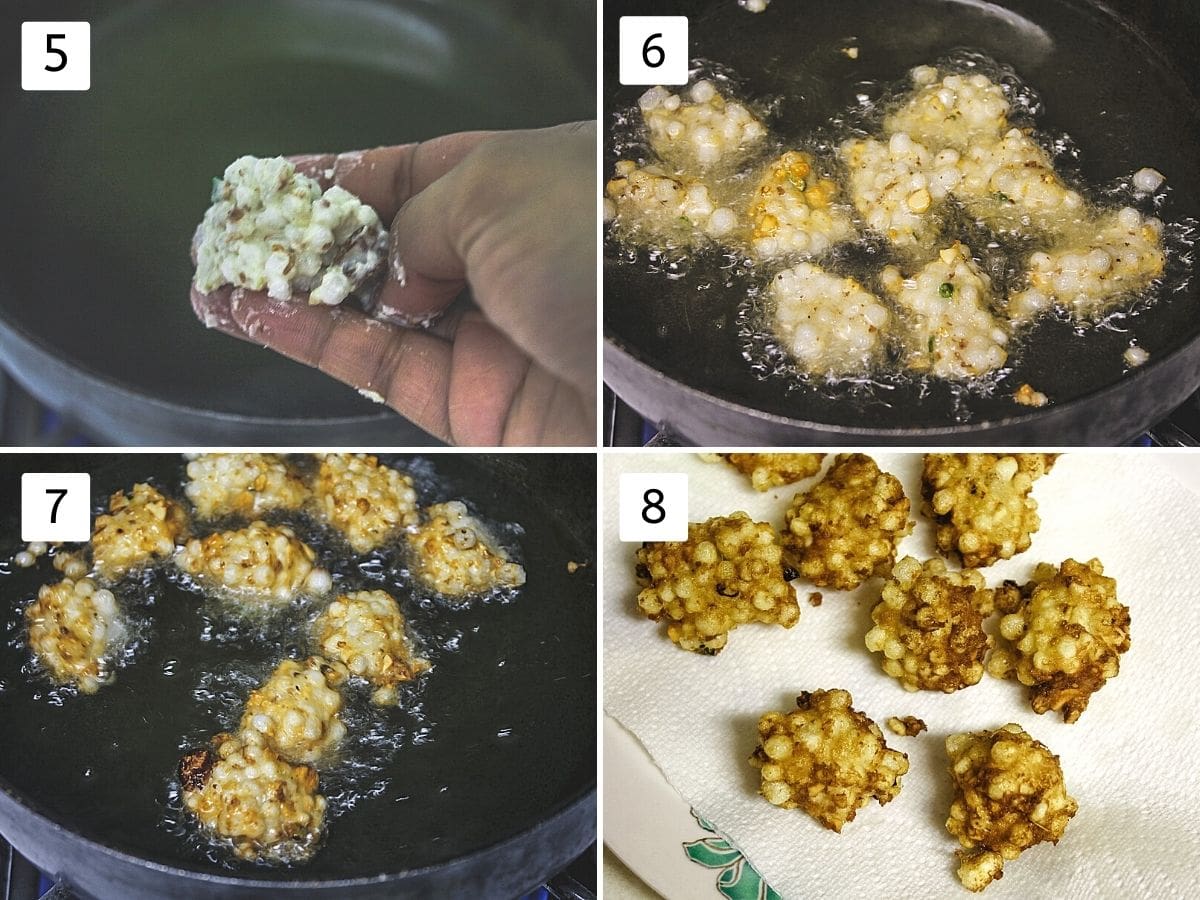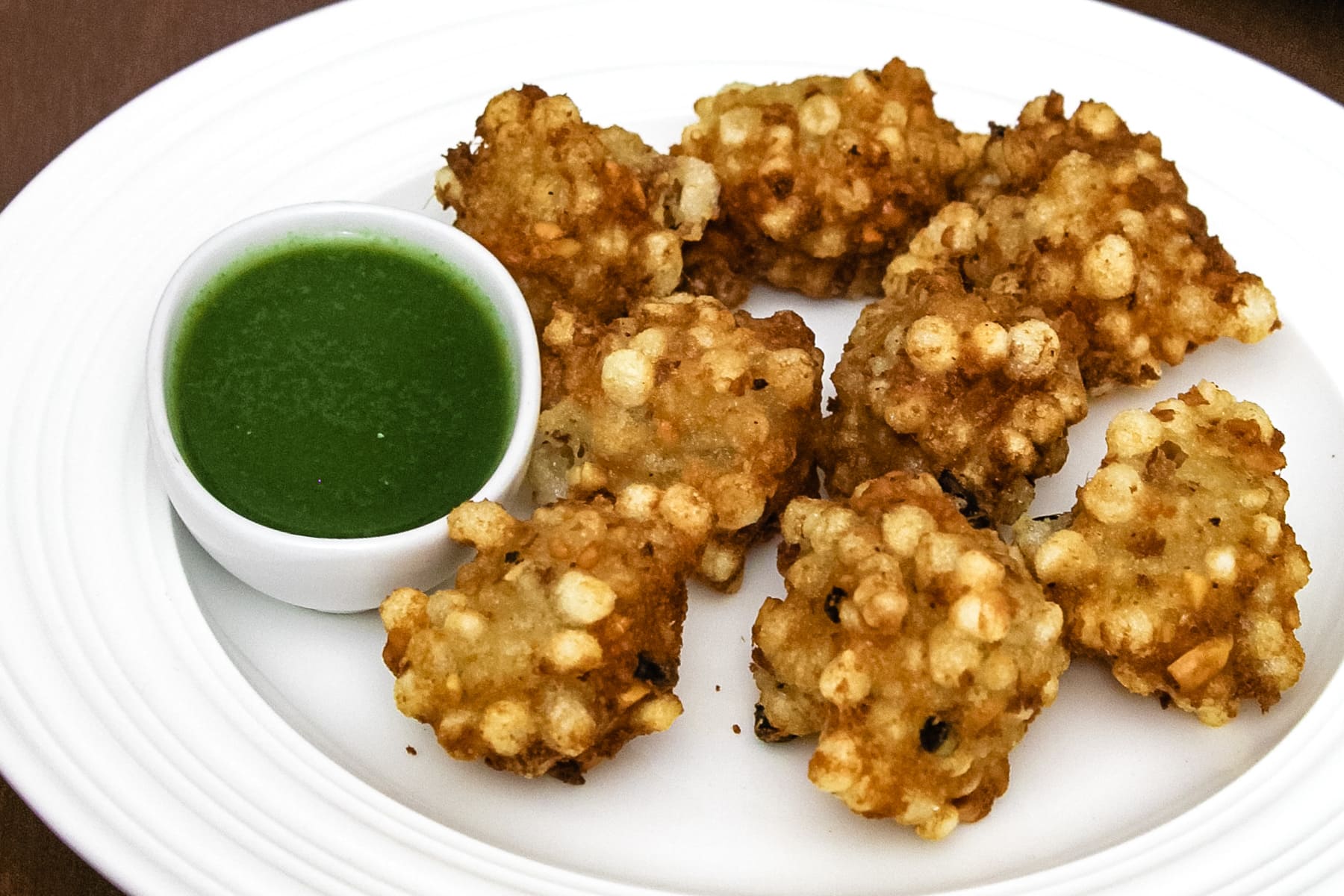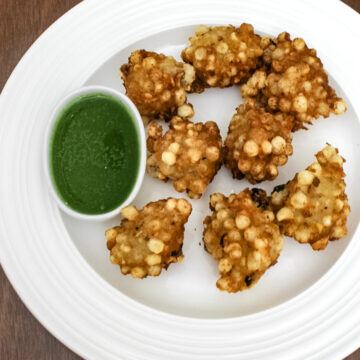❤️ About This Sabudana Pakoda Recipe
These sabudana pakoda are light to the stomach (not heavy like sabudana vada) because there is no potato used in this pakora recipe. All the ingredients used in this recipe are suitable for Hindu fasting (vrat or upvas). So you can enjoy them. Yes, they are light, but sure makes a filling snack.
🧾 Ingredient Notes
Here is the pic of the ingredients used in making sabudana pakoda recipe. Raisins are not shown in the pic but I have added while making (you can see in the step-by-step pics). It is optional though.
Sabudana: It is also known as tapioca pearls or sago. Sabudana is the most common ingredient used during religious fasting, it is full of carbohydrates and so it keeps you full for longer and gives you instant energy. Cloves and Cinnamon: I have freshly ground these two into powder using mortar and pestle. Instead, you can use garam masala (of course if making on a regular day, not for vrat). Yogurt: It is added into the pakora batter. It adds a nice flavor and makes very fluffy and soft sabudana pakoda. Rajgira atta (Amaranth flour): In regular pakoda, we use besan. But when making for fasting days, I have used rajgira atta. You can use other types of flours allowed in vrat like singhare ka atta (water chestnuts flour) or kuttu atta (buckwheat flour). But keep in mind that the flavor and taste changes based on which flour you are using. I prefer to use rajgira atta because it is naturally slightly sweet and has a nutty, earthy flavor. This pairs well with yogurt flavor.
👩🍳 How To Make Sabudana Pakoda? (Pics)
Soaking Sabudana:
- Take sabudana in a colander and wash under running cold water till water runs clear. Make sure to get rid of all the starch otherwise, the vada mixture will become sticky. – Then soak in the water for 3-4 hours or overnight (depending on the type of your sabudana). The one we get here in the USA always requires overnight soaking.
- After the soaking time, they swell up almost all the water and they become double in size.
- Transfer them into the colander, rest for 15-20 minutes and let the excess water drain out.
- when you press between your fingers it should mash easily. That’s how you know that your sabudana is soaked perfectly. Making Crushed Peanuts:
- While sabudana is draining, dry roast peanuts in a pan on medium-low heat until they get light brown.
- Let them cool down and then coarsely crush them. I always use mortar and pestle because I like the big chunks of peanuts in my pakoda. You can use a food processor or grinder. But those can sometimes make into the powder form. Making Fresh Powder:
- Take cloves and cinnamon in a mortar.
- Crush to make a fine powder. Making Sabudana Pakoda:
- Take drained sabudana in a large bowl. Add crushed peanuts, clove-cinnamon powder, rock salt, grated ginger, green chilies, cashew nuts and raisins. Mix well.
- Add yogurt and mix.
- Add rajgira atta.
- Mix well and make a thick batter kind of mixture.
- Heat the oil in a pan on medium heat for deep frying. When it’s hot, drop a spoonful of batter using your fingers and thumb (or use two spoons).
- Don’t touch them for a minute otherwise, they will break and fall apart in the oil which makes a big mess.
- After 1-2 minutes, move them around to get even browning.
- Once browned and crispy from all the sides, remove it to a paper towel lined plate using a slotted spoon.
💭 Expert Tips For BEST Sabudana Pakoda
Wash the sabudana to remove starch. For this step use a colander and get rid of all the starch by rubbing the pearls while washing. I would avoid the rinsing method. Sabudana must be soaked well. When you press between your finger and thumb, it should mash easily. If it is not soaked properly then it will stay hard, chewy even after frying the pakodas. And you will feel it while biting meaning raw tapioca pearls will stick to your teeth. The amount of water to soak sabudana: Always follow 1:1 ratio for sabudana:water. Or use another method – add just enough water that sabudana are submerged into the water (About ½ – 1 inch above the pearls). The oil has to be hot enough. Otherwise, pakoda will break and disintegrate into the oil. Also, it may soak up too much oil. Do not disturb them for a minute or so after adding pakoda into the hot oil. Let the outer surface cook and bind together. After a minute or so move and flip using a spatula. If you have touched them too soon then pakoda might break and fall apart into the oil.
🍽 Serving Ideas
On fasting days (vrat), serve sabudana pakoda with farali chutney. On regular days, serve with any green chutney, ketchup or tamarind date chutney.
PS Tried this sabudana pakoda recipe? Please leave a star rating in the recipe card below and/or a review in the comment section. I always appreciate your feedback! Plus, Subscribe to my newsletter and follow along on Pinterest, Instagram, and Facebook for all the latest updates.
Sabudaba tikki Sabudana salad Sabudana chivda Sabudana thalipeeth
